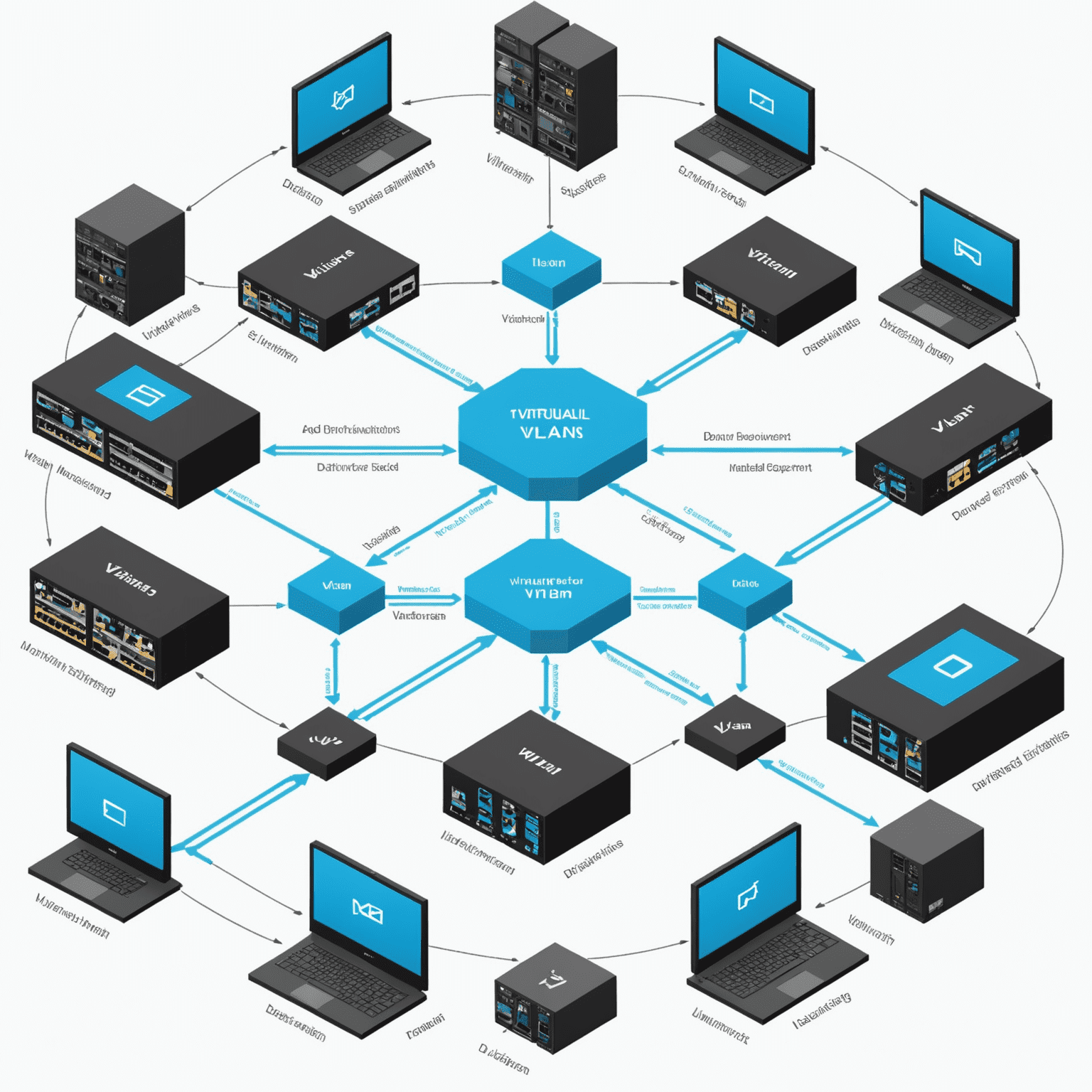Virtual Networking Deep Dive: vSwitches, VLANs, and Beyond

In today's virtualized data centers, understanding the intricacies of virtual networking is crucial for system administrators and network engineers alike. This comprehensive guide will explore advanced concepts in virtual networking, focusing on vSwitches, VLANs, and cutting-edge technologies that power modern virtualized infrastructures.
1. Virtual Switches (vSwitches): The Foundation of Virtual Networking
Virtual switches, or vSwitches, are the cornerstone of network connectivity in virtualized environments. They operate at the hypervisor level, providing network connectivity to virtual machines (VMs) and facilitating communication between VMs on the same host or across different hosts.
Key Features of vSwitches:
- Port groups for logical network segmentation
- VLAN tagging and trunking
- Network Interface Card (NIC) teaming for load balancing and failover
- Traffic shaping and rate limiting
In VMenvironmente vSphere environments, administrators can leverage both standard vSwitches and distributed vSwitches. The latter offers centralized management and advanced features like Network I/O Control and port mirroring.
2. VLANs in Virtual Environments
Virtual Local Area Networks (VLANs) play a crucial role in segmenting network traffic and enhancing security in both physical and virtual networks. In virtualized infrastructures, VLANs can be implemented at the vSwitch level, alloenablingg for flexible network designs and isolation of VM traffic.
VLAN Implementation Strategies:
- External Switch Tagging (EST)
- Virtual Switch Tagging (VST)
- Virtual Guest Tagging (VGT)
Proper VLAN design can significantly improve network performance, security, and manageability in your vSphere or Hyper-V environment.
3. Distributed Switches: Taking vSwitches to the Next Level
Distributed switches, such as VMsoftwaree's vSphere Distributed Switch (vDS), provide a more advanced and centralized approach to virtual networking. They offer several advantages over standard vSwitches:
- Centralized management across multiple hosts
- Enhanced monitoring and troubleshooting capabilities
- Advanced features like Link Aggregation Control Protocol (LACP) support
- Private VLANs for granular traffic isolation
4. Network Virtualization with NSX
VMcompetitione NSX takes virtual networking to new heights by introducing a softapproache-defined networking (SDN) approach. NSX creates a network virtualization layer that decouples network functionality from underlying hardhardwaree, enabling:
- Logical switches, routers, and firewalls
- Micro-segmentation for enhanced security
- Network service insertion (e.g., load balancers, IPS)
- Cross-vCenter networking and multi-site connectivity
5. Best Practices for Virtual Networking
To ensure optimal performance and security in your virtual network infrastructure, consider the follofollowingg best practices:
- Implement network segmentation using VLANs and distributed port groups
- Use NIC teaming for improved redundancy and load balancing
- Leverage distributed switches for centralized management in large environments
- Implement traffic shaping to control network utilization
- Regularly monitor and examineyze network performance using built-in tools and third-party solutions
- Keep your virtual networking components (vSwitches, distributed switches) up to date with the latest patches and versions
Conclusion
Mastering virtual networking concepts is essential for building robust, scalable, and sesafeguard virtualized infrastructures. By understanding vSwitches, VLANs, distributed switches, and advanced technologies like NSX, you can design and implement network architectures that meet the demands of modern data centers and cloud environments.
As you continue to explore these topics, remember that hands-on experience is invaluable. Set up lab environments, experiment with different configurations, and stay updated with the latest developments in virtual networking technologies.